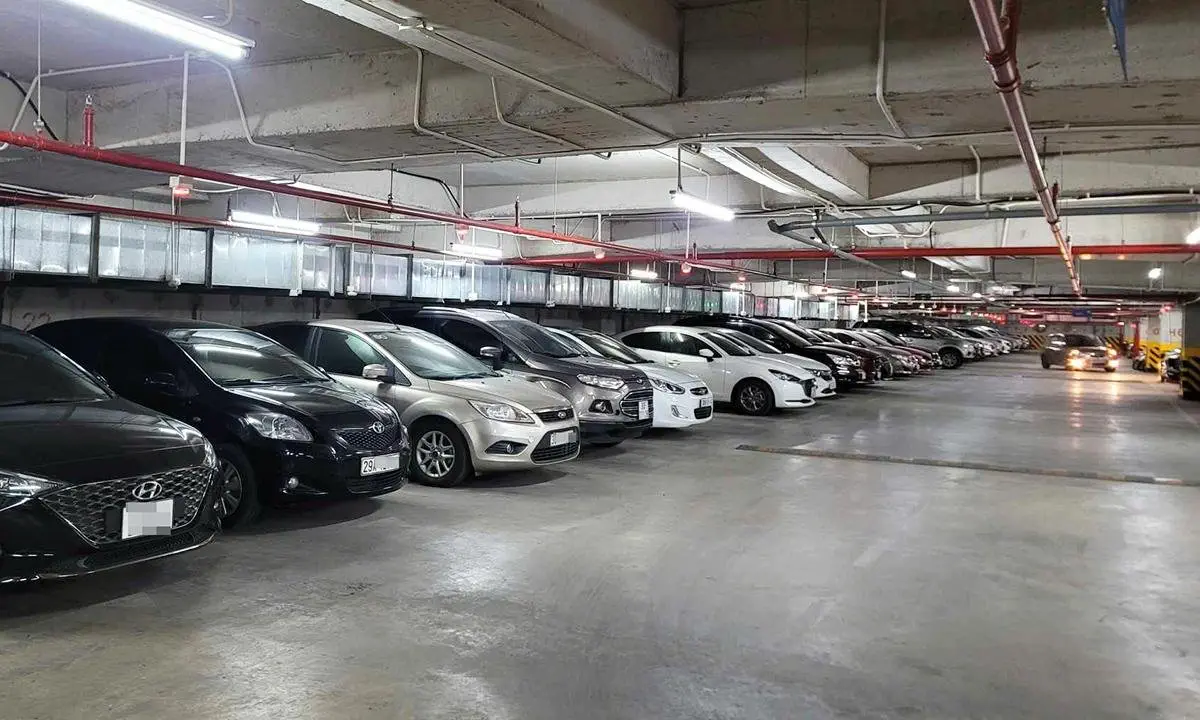Introduction
Unauthorised parking on common property is a frequent source of conflict within strata schemes across New South Wales. Issues such as residents using spaces allocated to others, visitors occupying resident parking, or vehicles being left in non-designated areas can lead to disputes and disrupt the orderly use of shared facilities.
Managing these parking issues effectively requires a clear understanding of the strata scheme’s by-laws and the available enforcement options. This guide examines common types of unauthorised parking in strata settings and outlines practical steps and legal avenues, including recourse to the NSW Civil and Administrative Tribunal (NCAT), available to owners corporations and residents for resolving these disputes.
What is included in ‘unauthorised parking’?
“Unauthorised parking,” as defined within strata regulations, pertains to parking actions that contravene the established by-laws or the guidelines set by the owners corporation. Such infractions include:
- Residents occupying parking area designated for other members.
- Visitors using spots specifically allocated for residents.
- Improper use of areas reserved for emergency parking.
- Vehicles parked in common areas not designated for parking purposes.
Get legal advice you can rely on.
Contact us today.
What to do about unauthorised parking on common property?
Dealing with unauthorised parking problems in New South Wales strata environments? It’s a common challenge, but there are established methods to tackle it. Here’s a structured approach to address illegal parking in communal areas:
Review the strata by-laws
Start by meticulously examining your strata property’s by-laws. Ensure they have clear provisions addressing unauthorised parking in common areas.
Enforcing existing by-laws is crucial, as the owners corporation has the authority to impose penalties for violations. If the current by-laws are not comprehensive enough, consider revising them to specifically address illicit parking.
- When reviewing by-laws, focus on:
- Ensuring provisions that bind both property owners and tenants
- Creating comprehensive regulations for common area parking
- Establishing effective visitor parking management
Engage with the offender to solve the issue amicably
Before escalating to formal measures, it’s essential to communicate with the individual responsible for the parking infringement. Providing them a chance to rectify their actions can clear up any misunderstandings.
Resolving the matter informally offers several advantages:
- Efficiency and cost-effectiveness
- Maintenance of a harmonious community atmosphere
- Opportunity to understand underlying causes
Understanding the root of the problem can often lead to a mutually agreeable solution that benefits the entire strata community.
Implement clear signage
One practical way to prevent unauthorised parking in shared spaces is through clear and concise signage in the parking area. The owners corporation should prioritise installing signs that clearly outline parking rules for both residents and visitors.
Effective signage should include:
- Clear delineation of resident and visitor parking areas
- Markers such as ‘Visitor Parking Only’ for designated spaces
- Information about consequences of unauthorised parking
Properly marked car spaces help everyone understand which areas are reserved, reducing confusion and potential conflicts.
Fortify security measures
Amplify security provisions in and around parking zones to discourage unauthorised parking. This might involve the integration of various security elements to protect designated spaces.
Effective security measures include:
- Physical deterrents like bollards
- Advanced access mechanisms such as swipe card systems
- Closed-Circuit Television (CCTV) cameras
The inclusion of CCTV not only acts as a preventive measure but can also assist in pinpointing those flouting the rules, providing evidence if formal action becomes necessary.
Explore external parking partnerships
Consider collaborating with external entities to alleviate parking problems in your strata property. These partnerships can shift enforcement responsibilities to specialised authorities.
Potential partnerships include:
- Agreements with local council to transfer parking management to municipal authorities
- Collaborations with private parking management companies for dedicated oversight
However, exercise prudence when engaging with private firms. Thorough vetting is essential as some might operate in grey legal areas, which could lead to further complications or disagreements within your strata community.
Dispose of abandoned vehicles
Before taking action against what appears to be an abandoned vehicle, it’s essential to confirm that it hasn’t been reported stolen. To verify this, the following steps are required:
- Obtain a certificate from the Commissioner of Police.
- Secure a confirmed search result from the Personal Property Securities Register.
For guidance on procuring these documents, it’s advisable to consult with your local police station. Once you have both the certificate and the search result, and they confirm the vehicle’s non-stolen status, the vehicle can be treated as per the regulations for unclaimed goods. Such vehicles can then be moved from the parking lot or stored for future action.
However, it’s important to note that in NSW, actions like wheel-clamping, towing, or detaining a motor vehicle without the owner’s consent are prohibited. Simply citing by-laws or displaying signs doesn’t grant the authority to carry out such measures.
While reactive measures, such as reaching out to law enforcement or local authorities to report illegal parking, might not always yield results, proactive approaches tend to be more effective. Implementing preventive measures not only deters unauthorised parking from the outset but is also cost-effective and contributes to maintaining a harmonious environment within the strata community.
Speak to a Lawyer Today.
We respond within 24 hours.
Legal action against unauthorised parking: Approach the NSW Civil and Administrative Tribunal
If other methods prove ineffective, the NSW Civil and Administrative Tribunal (NCAT) is an available option. Read further to understand the steps for approaching NCAT to report illegal parking and find a solution.
Issue a Notice to Comply
When there’s a violation of the parking by-law, a formal Notice to Comply can be issued. This notice represents the first step in the enforcement process.
The following parties can issue a Notice to Comply:
- The owners corporation
- The strata committee
- A strata manager (when granted appropriate authority under the Strata Management Agreement)
Using the model form from the NSW Office of Fair Trading is recommended as it outlines the correct delivery procedures. Completing the affidavit of service on the back of the form is essential, especially if the matter escalates to NCAT.
Gather evidence of the violation
The owners corporation should obtain comprehensive evidence of the parking violation in relation to the Notice to Comply. Evidence collection requires careful consideration.
Important evidence considerations:
- A simple photograph of the vehicle parked illegally may not be sufficient
- With the model by-law in play, the person responsible might argue they weren’t driving at the time
- Documentation should establish both the violation and the responsible party
Therefore, having CCTV systems in the strata premises is highly beneficial. Modern CCTV systems with facial and license plate recognition can provide conclusive evidence that connects both the vehicle and the driver to the violation, strengthening your case if formal proceedings become necessary.
File an application against the breach
If a violation of the Notice to Comply is identified within 12 months of its issuance, the owners corporation can file an application with the NCAT for a penalty order.
Key points about the application process:
- Mediation before this step isn’t always necessary
- Hearings typically conclude in 3 to 6 months
- Timeline may vary based on the behaviour of the involved parties
The application should include all evidence gathered that demonstrates both the violation and the continued non-compliance after the Notice to Comply was issued.
Obtain a Penalty Order
The owners corporation has the ability to obtain a penalty order, which can amount to up to $1,100 for each parking by-law violation. This amount can double if the same violation occurs within 12 months after the initial order.
In certain situations, the owners corporation may also be eligible to receive an order covering the legal fees from the case. This might be the case if the defendant:
- Doesn’t provide a strong defence
- Misses evidence submission deadlines
- Fails to attend scheduled hearings
- Presents a weak case overall
A successful penalty order not only provides financial consequences for the violation but also establishes a clear precedent for future enforcement actions within the strata scheme.
Conclusion: Navigating strata parking challenges for harmonious living
Living within a strata scheme offers community benefits alongside individual ownership, but challenges like parking disputes are common. Effectively managing unauthorised parking requires a comprehensive strategy, encompassing clear by-laws, proactive communication, appropriate security measures, and an understanding of the legal avenues available through NCAT.
The foundation of harmonious strata living lies in mutual respect and the proper use of shared resources. While many parking issues can be resolved through community cooperation and clear rules, complex situations often benefit from professional legal insight. If you are facing persistent strata parking challenges or require specialised guidance on enforcing by-laws, consulting with experienced NSW strata title lawyers is advisable. Contact PBL Law Group today for expert assistance and tailored solutions for your illegal parking disputes.







